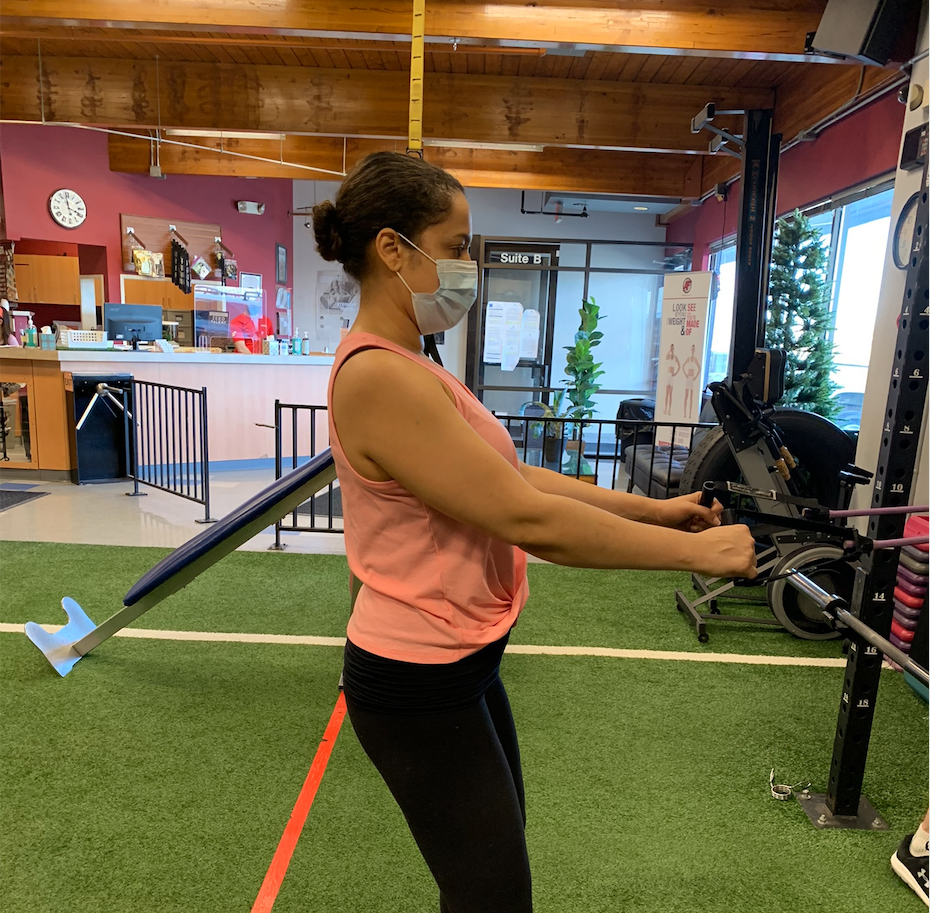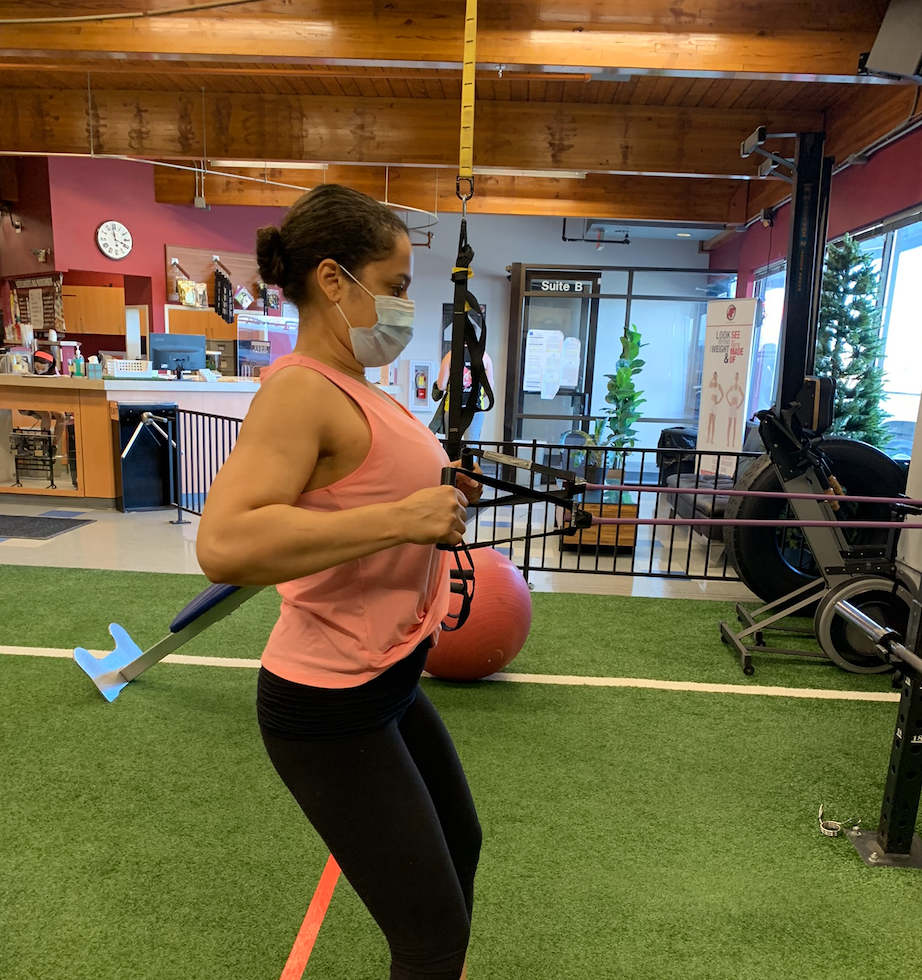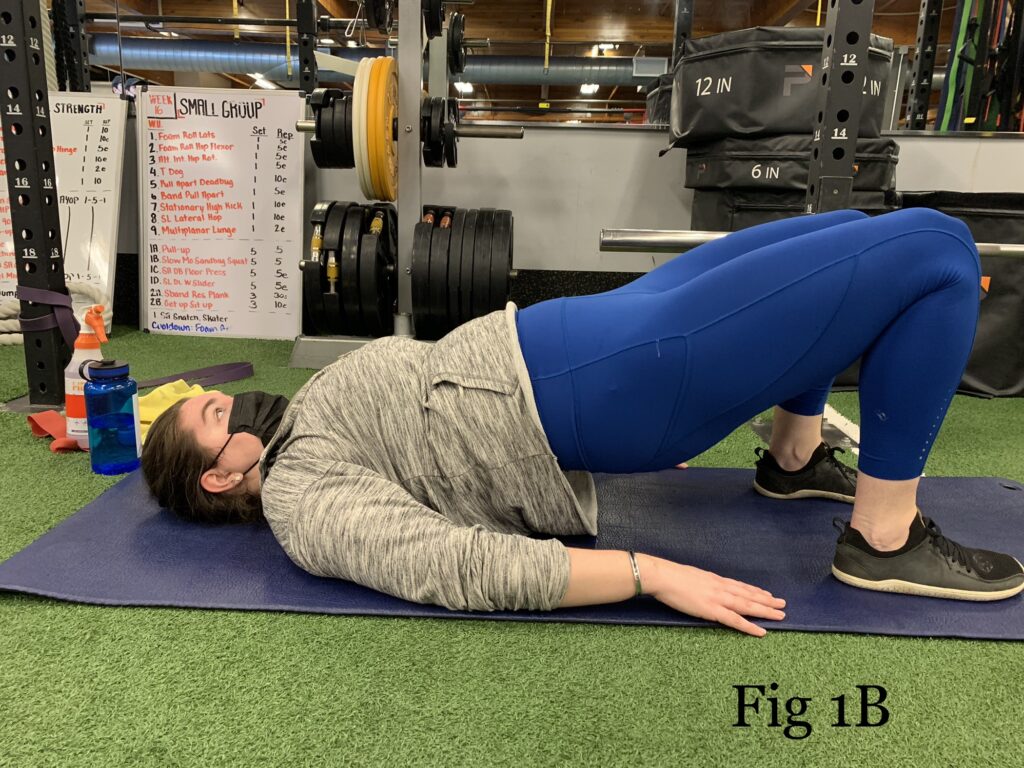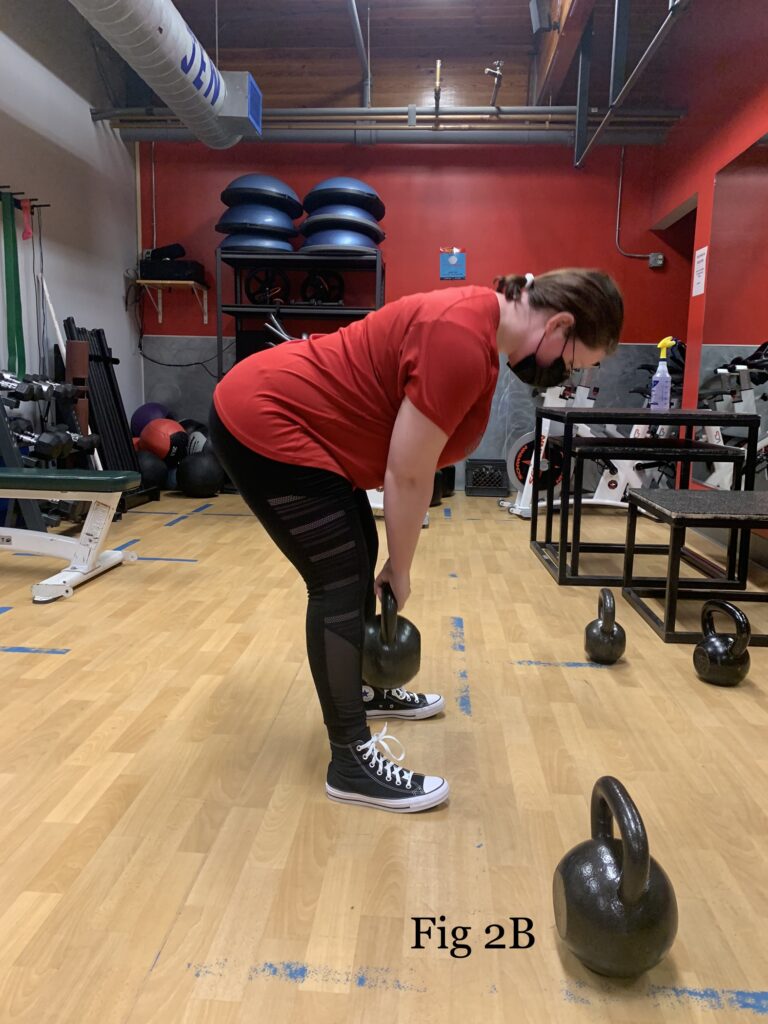
Balance is an essential concept in holistic medicine. The word is everywhere: we talk about work-life balance, balancing hormones and neurotransmitters, keeping an ideal acid-alkaline balance.
All of those types of balance are important. But the reality is, many people struggle with a more basic issue: physical balance. This is especially true as people age.
Poor balance raises the risk of falls, injuries, and compromised mobility. Helping patients to build strength and improve their balance will mitigate those risks.
In this second of our three-part series, I’ll explore how strengthening the shoulders, lumbar spine, and gluteal muscles will contribute to improved balance, greater overall wellbeing, and reduced risk of falls and other injuries.
Once someone demonstrates mastery of the core musculature (see “Core Values”: How to Help Patients Build Strength & Improve Balance) she or he is ready to progress to multiplanar exercises.
Stabilization of the shoulder complex and the lumbar spine, and strengthening the gluteal muscle group are essential for improving balance and low back health. Common conditions such as sciatica and chronic low back pain are a direct result of muscle imbalances in the anterior and posterior core.
Exercises that accomplish all three aspects —shoulder stabilization, gluteal strength, and core contraction—are efficient and demonstrate how the various parts of the body work in tandem.
Rehabbing Rounded Shoulders
Rounded shoulders and a forward-tilted head increase strain on the cervical spine. This also creates tightness in the pectorals, anterior deltoids, ribs, and serratus, and upper latissimus dorsi. Anterior tightness leads to posterior lengthening and weakness. The trapezius, rhomboids, and rotator cuff muscles are weakened and they lose the ability to hold the scapula in place.
For these reasons, rehabilitating rounded shoulders is the first step toward proper posture, better balance, and overall spinal health. Here are a few exercises that really help:
Retraction/Depression: This exercise, based on scapular retraction and depression, gives clients a sense of where the scapula should sit. It goes like this:
Lie supine, feet firmly planted on the floor, arms comfortably at the sides. Retract the scapula by squeezing the shoulder blades together and opening the chest. While holding the retraction, depress the scapula by pulling them down towards the hips. Hold for 2 seconds then release. Continue for two sets of ten repetitions.
Concentrating on these moments brings awareness to the upper back area. This creates neural pathways and strengthens the upper back muscles while simultaneously stretching tight chest and shoulder muscles.
Stoplights: This exercise incorporates strength while keeping the core stabilized against the floor. In the same supine position as the Retraction/Depression exercise, bring arms up so elbows form a T with the body, palms face forward. Depress the scapula and pull them down towards the hips. Then, push upper arms (triceps) into the floor with 40-50% effort and hold for 2 seconds.
The point is not to push as hard as possible, but rather to start with 50% effort so as to bring awareness and strength to all the muscles in the upper back, posterior shoulders, and triceps. You can then increase the isometric hold time as tolerated.
Rows: This is the perfect exercise for strength training of the upper back muscles. You can use bands, cables, or even a towel. The key here is not the weight being pulled but the degree of muscular contraction.


Stand with shoulders down and back (retracted/depressed), the Transverse abdominis (TVA) muscle contracted, soft knees, and wide feet for stability. Holding the handles of the cable or the ends of the towel, extend the arms with soft elbows. This produces slight protraction in the scapula and allows for natural movement. Then, generating the movement from the latissimus (back muscles), pull the handles towards the body, squeezing the shoulder blades as if trying to hold a coin between the scapula. Keep the elbows at an approximate 45o angle from the body. There’s no need to keep them close, but do not allow elbows to flare up. Under control, extend the arms and return to start.
Keep the scapula depressed through the movement, but a bit of protraction (forward movement) is okay, to allow full range of movement.
The eccentric portion of the movement (where the back muscles will be lengthened) is just as important as the concentric (pulling the hands back and squeezing the upper back). This strengthens the muscles and also builds awareness.
Lumbar Strength & Stability
Prolonged sitting and improper lifting/bending techniques can wreak havoc on the low back. Simply stretching the low back muscles is not enough to remedy these problems, as tight hip flexors, iliotibial (IT) bands, and inflamed piriformis muscles set off a chain reaction leading to chronic low back and sciatic nerve pain.
Anti-rotation movements are most effective for stabilizing the lumbar spine. When practiced diligently, they create a solid foundation for more complex movements.
Dead Bugs: Lie supine on the floor, arms raised, palms facing each other. Bring legs up, knees bent to 90o. Firmly flatten the low back onto the floor during the entire exercise.
Keeping TVA contracted, extend left leg and right arm towards the floor. Pause, then bring arm and leg back to start position. Repeat this movement with the right leg and left arm together.
This contralateral movement is deceptively challenging; it simultaneously works on shoulder and lumbar stabilization, as well as increasing proprioception and coordination of the limbs.
The key to this exercise is keeping the low back imprinted on the floor. Shoulders are down and back, retracted and depressed. As the arms reach overhead, it is important to maintain this scapular depression so the shoulders don’t unconsciously “float” up toward the ears—a very common tendency.
Poor balance raises the risk of falls, injuries, and compromised mobility. Helping patients to build strength and improve their balance will mitigate those risks.
Bird Dog: The Birddog exercise is the inverse of dead bugs. Instead of the lumbar spine being stabilized against the floor, the patient is on hands and knees, and must work against gravity to keep the hips steady.
Begin in a quadruped (aka “tabletop) position, with the shoulders pulled down and back, and the joints stacked: Shoulder joints right over the elbows which are over the wrist; hips are stacked over the knees, and knees are hip width apart. Keep the neck in neutral alignment, not dropping down and not curved upwards. This is another contralateral movement that will be challenging at the beginning.
From the quadruped position extend the left leg and the right arm, holding for 2 seconds and increasing this hold time as tolerated. Repeat with right leg/left arm, alternating each repetition. Do 10 repetitions on both sides.
This exercise strengthens and stabilizes shoulders, lumbar spine, and glutes. Patients may find it is more challenging to stay balanced on one side than the other.
Planks: This classic anti-rotational movement focuses on contracting and strengthening the entire core from shoulders to glutes.
The plank position is, essentially, the top of a push-up. Keep the shoulders down and back, the joints stacked, and with a microbend at the elbows. On knees or toes, create a straight line running up along the entire body, from the legs to the top of the head. Pull the pelvis in, imagining there are cords connecting the hip bones and the ribs. Keep those cords short and taut throughout the exercise. Keep the shoulders stable, contract all core musculature, and engage the glutes. Hold this plank position for 30 seconds, increasing the time as tolerated.
Strengthening the Gluteals
As discussed in the first article in the series, there’s a common phenomenon I refer to as “sleepy butt.” I see it in most people. It’s the result of prolonged sitting and lack of physical movement, in addition to incorrect movement patterns, all resulting in a lengthening and weakening of the gluteal muscles, with a concurrent tightening of the hip flexors becoming tight and painful. These issues must be addressed together to correct the muscle imbalance, or the problems will persist.


I recommend the following three exercises to begin to directly strengthen the glutes. These exercises carry the added benefit of also addressing weaknesses in the posterior shoulders and in all muscles along the spine.
Glute Bridges: Lie supine, arms at the sides, shoulders down and back, with the feet firmly planted on the earth, knees in line with the hip bones. Feet should be hip width apart, with the heels close to the glutes. Pushing through the heels, use the glutes to lift hips, squeezing glutes at the top of the movement. Avoid hyperextending low back, and focus on keeping the torso in a straight line, with the hips in neutral alignment.
If there is lack of sensation in the gluteals, or there’s any strain in the low back, experiment by changing foot placement. Also, touching the gluteal muscles while working them will aid in building the neural pathways.
By keeping the shoulders down and back, and the chest broad and open, this exercise aids in shoulder stabilization. Though the glutes are the primary movers, the low back muscles are also working and strengthening without being strained.
Weighted Hip Hinges: Adding front weights to the hip hinge exercise will strengthen the entire posterior chain from shoulders to hamstrings, in addition to the anterior core muscles. Dumbbells, barbells, or kettlebells are all appropriate depending on patient preference. Dumbbells have the added benefit of working shoulder rotation.


Stand in an athletic stance, dumbbells at sides. With the weight on the heels, push the hips back. Keep the knees soft, but do not bend them. Remember, this is a hinge, not a squat! As the hips hinge back, keep the shoulders down and the chest up, and allow the dumbbells to rotate forward so they are scraping the thighs (quads). Keep the entire back engaged in order to keep a straight spine from crown to tail.
Notice the stretching sensation in the back of the legs, the hamstrings. Once you feel a deep stretch, push through the heels, bring the hips back up to neutral and squeeze the glutes. Dumbbells should rotate back to the sides. Take care to avoid hyperextension in the low back.
Squats: Squats are a complex movement, so introduce them only after patients show good control over their hip hinges. Hip hinges are the beginning of the squat and it helps load weight to the heels, activating the gluteals.
To practice squats, begin in an athletic stance, sit hips back into a hip hinge, weight on the heels, chest up. Reach hips back as if sitting in a chair, then begin the knee bend, still keeping chest up. The upper body and tibia should be at roughly the same angle. Squat as low as possible while still being able to get up.
The optimal position, for a full range of gluteal motion, is to bend the knees 90o, keeping the thighs parallel or just below parallel with the floor. If that is too difficult, begin with quarter squats for a while, to build strength.
Squats are a full-body movement. They tax the entire posterior chain and core muscles, and they also activate the Central Nervous System.
When practiced regularly, squats increase balance and control. In many cases, this can lead to improvements in carrying out Activities of Daily Living (ADL). By learning how to squat properly patients learn how to protect the low back and the knees while doing things like getting on and off the floor, shifting from sitting to standing, lifting something off the ground, and much more.
Combined, these exercises help people connect with their bodies in a way that will increase their confidence in moving through life pain-free. Learning how to connect and control the muscles in the shoulders, lumbar spine, and glutes will reduce risk of falls by minimizing improper movement patterns.
It is common that fear of certain movement patterns leads to avoidance, which in turn solidifies muscle imbalances, leading to more pain and fear. As people age, their repertoire of movement patterns decreases, and their apprehension about various movements or positions increases. These exercises, which are gentle, corrective, and appropriate for any age, are effective tools for interrupting this endless loop.
In the third, and final installment of this Building Balance series, we’ll look at building on the foundation and increasing stability, strength, and function. Watch for that in the Fall edition of Holistic Primary Care.
END
Stacy Collier is an independent practice management and billing consultant based in Anchorage, AK. She is also a certified personal trainer with a special focus on Corrective Exercise Therapy, helping people living with low back, shoulder, hip, and knee pain. Stacy recently launched Attainable Fitness, LLC, her personal training and fitness coaching practice.







